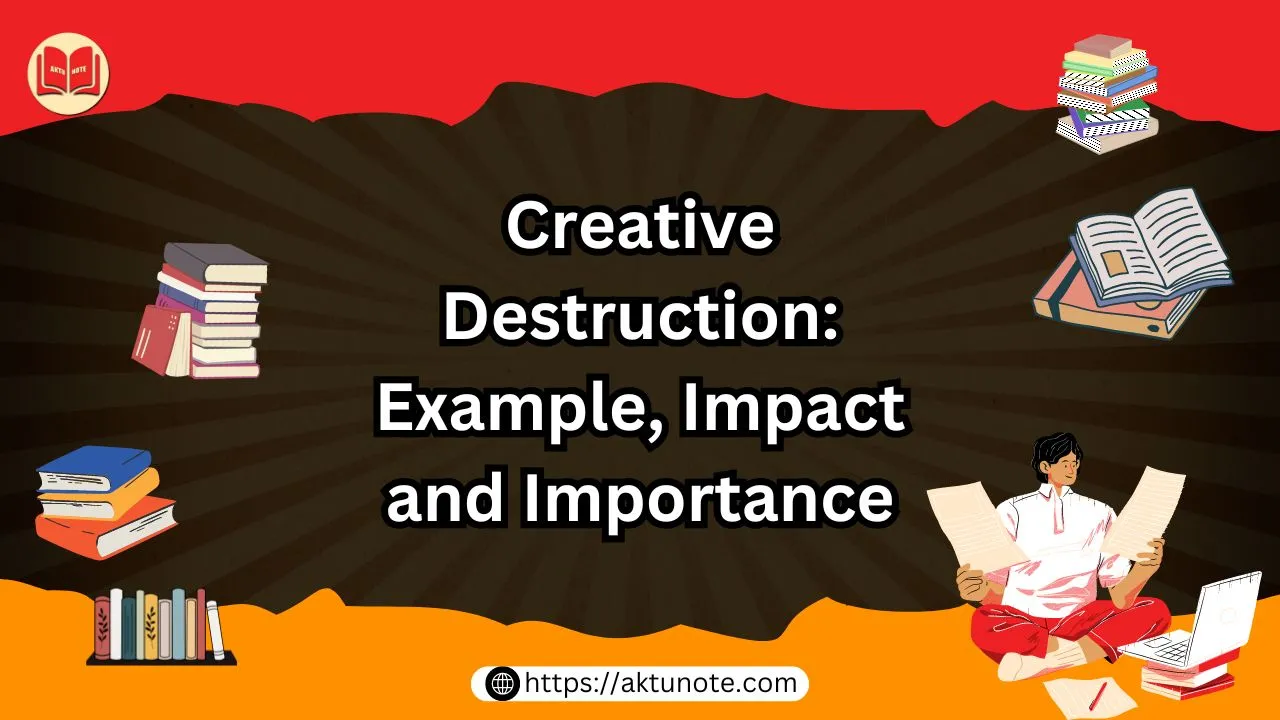In the world of economics and business, change is the only constant. An interesting concept that embodies this change is creative destruction—a process where old industries, technologies, or ways of doing things are replaced by newer, more efficient, and innovative ones. Coined by the Austrian economist Joseph Schumpeter, creative destruction is the engine of capitalist growth, where innovations lead to the rise of new industries while dismantling older ones.
In this article, we’ll explore the meaning of creative destruction, its significance, and how it affects businesses and economies, using relatable examples from our Indian context.
What is Creative Destruction?
Creative destruction refers to the process where innovation and progress render existing products, services, or industries obsolete. It is a cycle of creation and annihilation that leads to continuous transformation in the economy. While this process can be disruptive and challenging for established businesses, it also opens doors for newer, more advanced industries to thrive.
To understand it better, think about how, in an Indian household, when a new appliance like a microwave or mixer-grinder enters the kitchen, it often replaces old methods of cooking or grinding spices by hand. The older, time-consuming methods are no longer needed because the new technology offers a more efficient way of doing the same task. This is a simplified form of creative destruction at work.
Examples of Creative Destruction in the Indian Context
Creative destruction is a powerful force that can be seen in various sectors of the Indian economy. Let’s look at some significant examples:
Telecommunication
The Fall of Landlines and Rise of Mobile Phones A classic example of creative destruction in India is the transition from landline phones to mobile phones. In the 1990s, having a landline at home was considered a symbol of modernity, and people had to wait months for a phone connection. But with the advent of mobile technology, the landline industry quickly started to fade. Today, with smartphones in nearly every household—from urban cities to rural villages—landlines have become a relic of the past. Companies that once dominated the landline industry either adapted or faced extinction.
E-commerce vs. Traditional Retail Another striking example is the rise of e-commerce platforms like Amazon and Flipkart, which have changed how Indians shop. Before the digital boom, traditional brick-and-mortar stores ruled the retail sector. Shopping meant physically visiting markets or malls to buy goods. However, the convenience of online shopping—home delivery, better discounts, and wider product availability—has led to the decline of many traditional stores. While local retailers have had to adapt to survive, e-commerce has undoubtedly reshaped the retail landscape in India.
Digital Payments vs. Cash Economy India has long been a cash-driven economy, with people preferring to use cash for everyday transactions. However, the rise of digital payments—aided by platforms like Paytm, Google Pay, and the introduction of UPI (Unified Payments Interface)—is a clear example of creative destruction in the financial sector. The 2016 demonetization initiative by the Indian government also accelerated the shift towards cashless transactions. Today, digital wallets and UPI transactions have become the norm, even in small towns and villages. This shift has rendered the traditional, cash-only model less relevant.
Automobile Industry
Electric Vehicles vs. Traditional Cars The ongoing transformation in the automobile industry is another example of creative destruction. While petrol and diesel cars have dominated Indian roads for decades, the growing focus on sustainability and environmental concerns has led to the rise of electric vehicles (EVs). Companies like Tata Motors and Ather Energy are investing heavily in EV technology. Although the adoption of EVs is still in its early stages, the shift is inevitable. In the future, petrol and diesel cars may become obsolete, much like horse-drawn carriages in the past.
The Impact of Creative Destruction
While creative destruction drives economic growth, it comes with its challenges. The process can lead to job losses, the decline of industries, and economic shifts. However, the long-term benefits often outweigh the short-term disruptions, as new industries and jobs emerge in place of the old ones.
Disruption of Jobs and Industries
When old technologies or industries are replaced, the workers employed in those sectors can face job losses. For example, with the decline of typewriters, many typewriter repair shops and manufacturers went out of business. However, creative destruction also opens up new job opportunities in emerging industries, like the IT sector, which boomed after the internet revolution.
Improvement in Efficiency and Productivity
One of the key benefits of creative destruction is the increase in productivity and efficiency. Newer technologies tend to be more advanced and effective. For example, the introduction of automated machines in factories has replaced manual labor in many areas, resulting in faster production times and lower costs.
Innovation and Growth
Creative destruction fuels innovation by constantly pushing companies to improve their products and services. In India, Jio’s entry into the telecom market is a prime example. Jio offered affordable 4G services, disrupting the entire telecom sector. This forced other telecom companies to improve their offerings and lower their prices, benefiting the consumers.
Why Creative Destruction is Necessary for Progress
Creative destruction, although disruptive, is essential for long-term growth and progress. It forces businesses to evolve and adapt to new realities. Without creative destruction, economies would stagnate, and industries would become complacent, leading to inefficiency and reduced competitiveness.
In an Indian context, creative destruction is particularly important because it allows the economy to leapfrog certain stages of development. For example, many parts of rural India skipped the personal computer phase and directly adopted mobile phones and internet services, thereby accelerating growth.
Encouraging Competition
When new businesses and technologies emerge, they disrupt monopolies and encourage healthy competition. This leads to better products, services, and prices for consumers. For instance, Ola and Uber entering the ride-hailing market in India forced the traditional taxi industry to improve its services.
Fostering Innovation
As businesses face competition, they are compelled to innovate. This creates a continuous cycle of improvement. Consider how startups in the fintech sector have revolutionized banking in India. Traditional banks now offer mobile apps, digital banking, and personalized services to stay relevant.
Bringing New Opportunities
While creative destruction makes some jobs obsolete, it also creates new opportunities in emerging fields. As traditional forms of media, like newspapers, decline, digital media platforms, bloggers, and YouTubers are thriving in today’s content-driven market.
For More Content Check Out :- Innovation and Entrepreneursip
Conclusion
Creative destruction is an inevitable part of economic progress and development. It is a force that replaces old systems with new, more efficient ones, allowing for innovation, growth, and improved standards of living. While the process can be challenging for businesses and workers in the short term, the long-term benefits far outweigh the costs.
In an Indian household, we see creative destruction in the simple shift from using landlines to mobile phones or from visiting physical stores to shopping online. It’s a constant reminder that change, though uncomfortable, is necessary for growth. As technology continues to evolve, businesses and individuals must adapt to stay relevant in this ever-changing world.
Creative destruction teaches us an important lesson—if we don’t change with the times, the times will change without us. Whether it’s in the form of technological advancements or new business models, embracing change is key to success and progress in today’s world.

